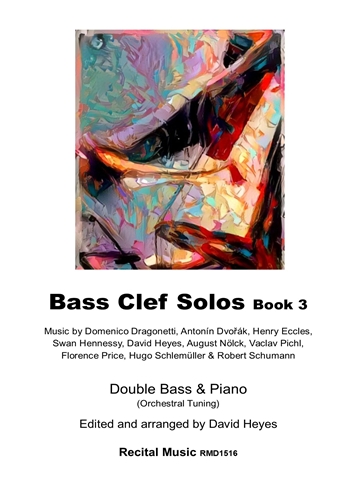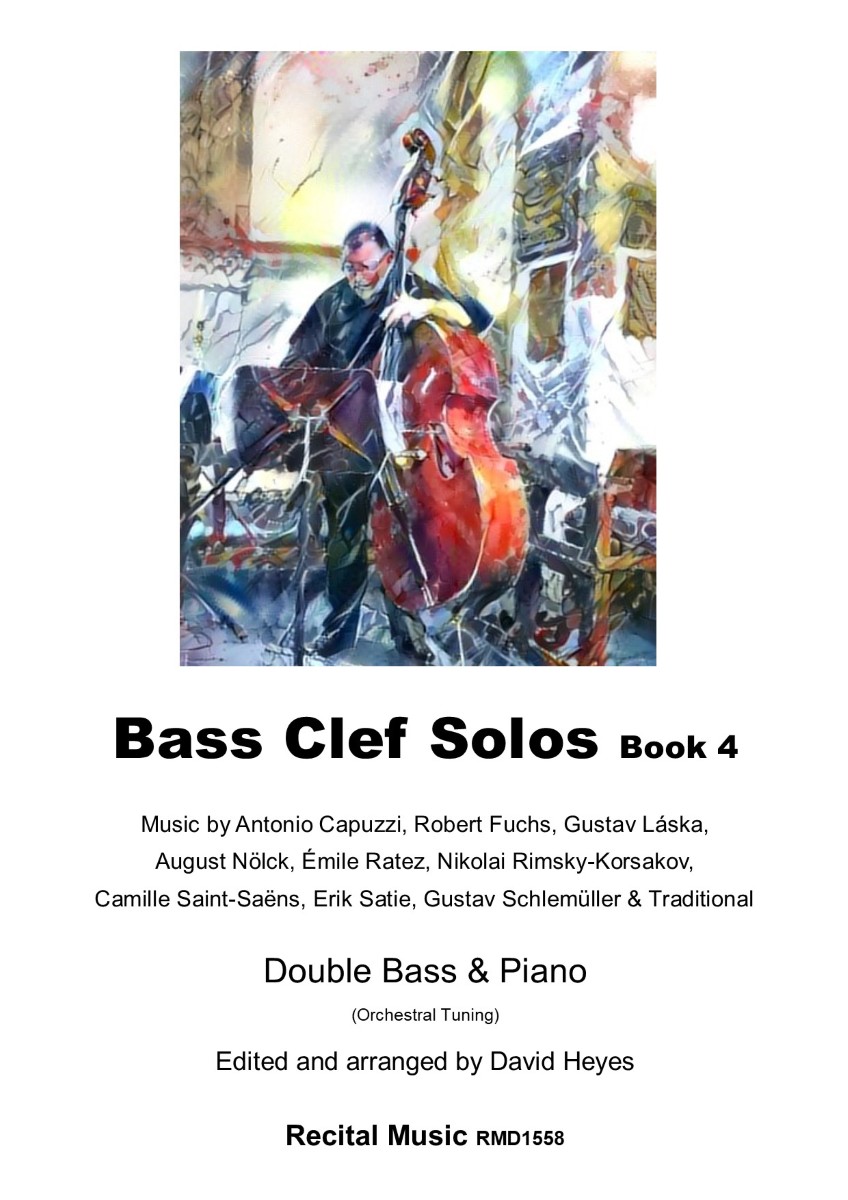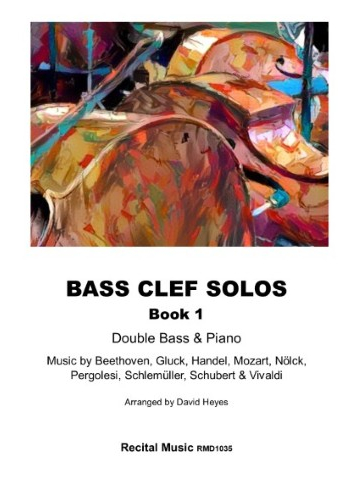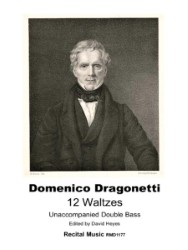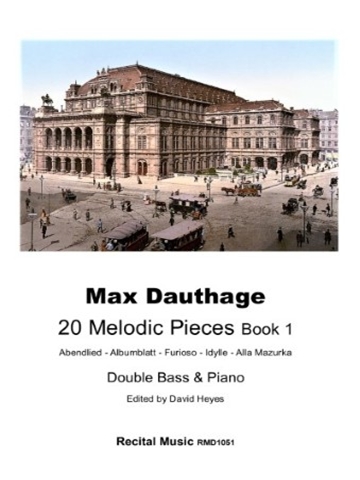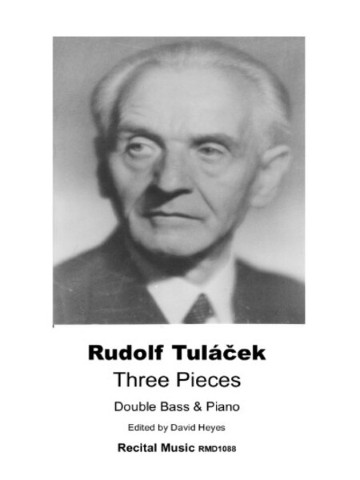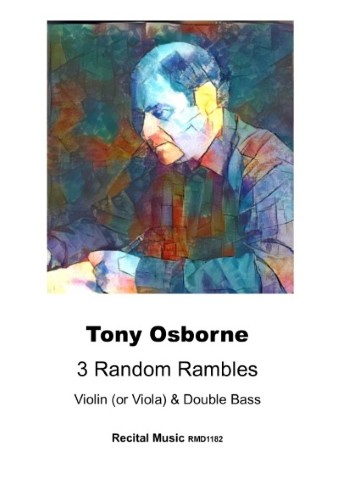Bass Clef Solos Book 5
Orchestral Tuning
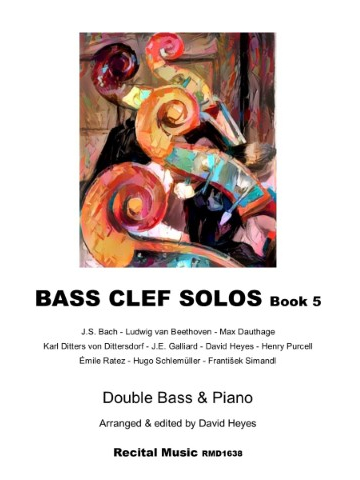
Composer: Various
Arranger: Heyes, David
Instrumentation: Double Bass & Piano
Publisher:
| Product Code: | RMD1638 |
| Publishers Number: | RMD1638 |
| Series: | Bass Clef Solos |
| Published date:: | 19-May-25 |
| Language: | English |
| Condition: | New |
2. Dauthage – Waltz
3. Galliard – Hornpipe a l’Inglese
4. Simandl – Concert Study No.25
5. Bach – Gigue
6. Schlemuller – At the Circus
7. Beethoven – Minuet in G
8. Purcell – When I am Laid in Earth
9. Dittersdorf – German Dance
10. Heyes – Lost in Space
Bass Clef Solos is a series of fifty original works and transcriptions for the intermediate and progressing double bassist.
Divided into five books, each piece offers…
Divided into five books, each piece offers both musical and technical challenges in the orchestral range of the instrument, remaining in bass clef throughout, and are ideal for both study or concert use.
Edited by David Heyes, the series includes music from the 16th to the 21st-century, in a range of styles and idioms, with something to suit most tastes. Each piece has been carefully selected for the series, with piano accompaniments that are supportive and accessible, creating an exciting and innovative collection that should appeal to bassists of all ages.
Bass Clef Solos Book 5 includes ten exciting and inventive pieces for the intermediate bassist, suitable for both concert and study repertoire. The collection features four original works and six transcriptions in popular and accessible styles, from the 17th century to the present day.
Available in orchestral tuning only.
1. Émile Ratez (1854-1934) – Cantabile Op.46, No.2
The second of Six Characteristic Pieces and composed in the early years of the 20th-century, Cantabile emphasises the lyrical and cantabile qualities of the double bass, contrasting a middle section which is dramatic and rhythmically charged. The style is tonal and traditional.
2. Max Dauthage (1862-1937) – Waltz
Max Dauthage was a member of the Vienna Philharmonic Orchestra and taught at Vienna Conservatoire. His 20 Melodic Pieces for double bass and piano were published in 1911 and Waltz is an elegant and stylist dance, reminiscent of a previous age, bringing to mind the beautiful waltzes of Johann Strauss II and his contemporaries.
3. J.E. Galliard (1687-1747) – Hornpipe à l’Inglese
Originally for bassoon and arranged for cello by Alfred Moffat (1866-1950), Hornpipe à l’Inglese is the second movement of Sonata No.1 in A major. In the tonic minor key, the music is bright and vibrant with a rhythmic energy which suggests a fun and dance-like hornpipe.
4) František Simandl (1840-1912) – Concerto Study No.25
Simandl is one of the most significant figures in the development of the double bass throughout the final decades of the 19th-century. He composed and transcribed a wealth of music for the double bass and his 30 Studies, usually played without accompaniment, are a standard part of the teaching repertoire to the present day.
5) J.S. Bach (1685-1750) – Gigue
Bach’s Cello Suites are standard repertoire for the solo double bass today, available in a range of keys and publications, and Gigue is the final movement from Suite No.1. In the 19th-century, many piano accompaniments were written for the unaccompanied works of Bach and this one, by German composer Carl G.P. Grädener (1812-1883), is simple, elegant and supportive adding a new perspective to a popular solo.
6) Hugo Schlemüller (1872-1918) – At the Circus Op.25, No.6
Schlemüller composed a wealth of music for young cellists and over the years many of his pieces have been transcribed for double bass. At the Circus (Im Zirkus) is the sixth and final piece of Six Fun Pieces Op.25, for cello and piano and first published in 1919. The piece is fun and lively, with a colourful and rhythmic accompaniment and would be ideal as both a teaching and concert piece.
7) Ludwig van Beethoven (1770-1827) – Minuet in G
Originally for orchestra but known today in a version for solo piano, Minuet in G is probably one of Beethoven’s most memorable melodies. It has been arranged for many different instruments and ensembles, and is an elegant and stylish miniature contrasting a rhythmic and engaging middle section between music of a more lyrical and cantabile nature.
8) Henry Purcell (1659-1695) – When I am Laid in Earth
Composed c.1688, Purcell’s opera Dido and Aeneas is one the earliest known English operas. When I am Laid in Earth, also known as Dido’s Lament, is the closing aria from the opera and is based on a ground bass of ten notes which are repeated eleven times. The solo line is a beautifully sonorous and poignant lament which exploits the lyrical and cantabile qualities of the double bass across its middle register.
9) Karl Ditters von Dittersdorf (1739-1799) – German Dance
Dittersdorf was a prolific and popular composer of the 18th-century and is remembered by bassists because of his two Concertos for violone and a Sinfonia Concertante. German Dance (Deutscher Tanz) is from Book 3 of Stücke alter Meister, arranged for violin and piano by Willy Burmester (1869-1933), and is a lively and engaging country dance with a strongly rhythmic energy and momentum throughout.
10) David Heyes (b.1960) – Lost in Space
Lost in Space is the first piece from Bass-in-Space, a suite of five colourful, atmospheric and engaging pieces aimed at the progressing young bassist.
The solo line is generally slow moving, against a repetitive arpeggio figure in the accompaniment, with opportunities for the bassist to create long melodic lines which portray an astronaut floating slowly and silently in outer space.
R.R.P 11.5
Our Price: 9.2
Digital Download – PDF
Shipping costs: No shipping
Other books in this series
You might also like
-
12 Waltzes for Double Bass
£6.80 -
20 Melodic Pieces Book 1
£6.80 -
3 Pieces for Double Bass and Piano
£10.00 -
3 Random Rambles
£6.80

